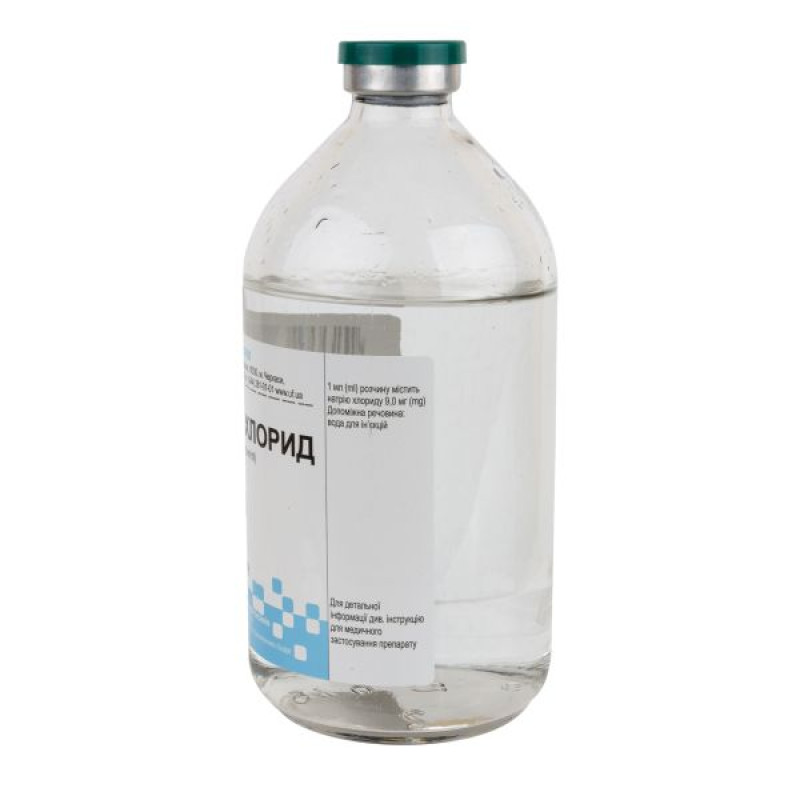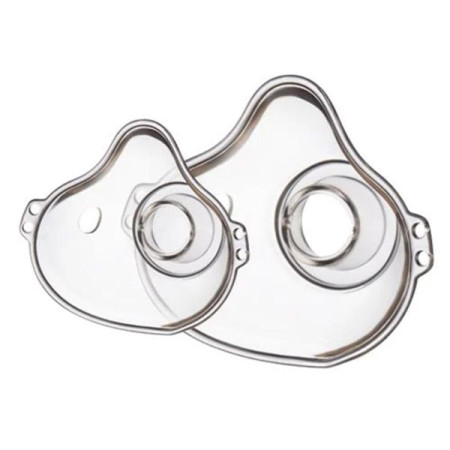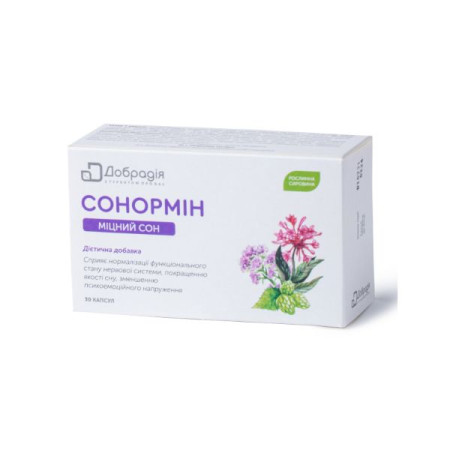Sodium chloride solution for infusion 0.9% 400 ml

Instructions Sodium chloride solution for infusion 0.9% 400 ml
Composition
active ingredient: sodium chloride;
1 ml of solution contains 50 mg of sodium chloride;
Excipients: water for injection, sodium hydroxide, concentrated hydrochloric acid.
Dosage form
Solution for infusion.
Main physicochemical properties: colorless transparent liquid.
Ionic composition per 1 liter of the drug: Na+ — 855.57 mmol/l, Cl¯ — 855.57 mmol/l.
Theoretical osmolarity is 1710 mosmol/l, pH is from 4.5 to 7.0.
Pharmacotherapeutic group
Blood substitutes and perfusion solutions. Electrolyte solutions. ATX code B05X A03.
Pharmacological properties
Pharmacodynamics
5% sodium chloride solution normalizes water-salt balance and eliminates electrolyte and fluid deficiency in the human body, induces diuresis depending on the patient's clinical condition. Sodium is the main cation of the intercellular space, which mainly controls the distribution of water, fluid balance and osmotic pressure in body fluids. The association of sodium ions with chlorine and bicarbonate ions regulates the acid-base balance of body fluids. Chlorine is the main anion of the intercellular space, it is closely related to sodium metabolism and changes the acid-base balance of the body in response to changes in chloride concentration.
Pharmacokinetics
It is rapidly excreted unchanged by the kidneys, but a large amount of sodium is reabsorbed. A small amount of sodium is lost in feces and sweat.
Indication
To replenish the lack of fluid and electrolytes in the body.
A 5% sodium chloride solution can induce diuresis depending on the patient's clinical condition.
Contraindication
Hypernatremia, hyperchloremia.
Acidosis.
Fluid retention.
Hyperhydration.
Special safety precautions
This medicine is a hypertonic solution. Very rapid administration of a hypertonic solution may result in sudden cardiac arrest or circulatory overload.
Interaction with other medicinal products and other types of interactions
The use of corticosteroids or steroids can lead to water retention and sodium and chlorine ions in the body with the development of edema and increased blood pressure.
Application features
Before using the drug, check the tightness of the infusion system packaging and the drug container. Under no circumstances should the container be reused for further manipulations.
Plasma and urine electrolyte levels, as well as diuresis, should be monitored during prolonged administration or if the patient's condition requires such assessment.
Administer with caution to patients with hypervolemia, renal failure, urinary tract obstruction, or in the presence of cardiac decompensation or the threat of its occurrence.
During prolonged nasogastric aspiration, vomiting, diarrhea, or drainage of gastrointestinal fistulas, unexpected electrolyte losses may develop, requiring the additional use of other electrolyte solutions, vitamins, and minerals.
Sodium-containing solutions should be administered with caution to patients receiving corticosteroids or corticotropin and to other patients with salt retention.
Use with caution in patients with renal or cardiovascular insufficiency, with or without congestive heart failure, especially in the elderly or postoperative patients.
Excessive administration of hypertonic sodium chloride solutions may increase serum sodium and chloride concentrations and lead to hypernatremia. Excessive administration of chlorides may cause bicarbonate loss with an acidifying effect.
Polymer containers should not be used in series connection.
If administration is performed using a pump, care should be taken to stop pumping before the container is empty to avoid air embolism. If administration is not performed using a pump, excessive pressure (> 300 mmHg) should be avoided as this may cause deformation of the container, such as compression or twisting, and may result in damage to the container.
Rapid correction of hyponatremia causes osmotic edema of the pons white matter, leading to the development of osmotic myelinolysis syndrome. The possibility of too rapid administration of hypertonic solution should be minimized.
Use during pregnancy or breastfeeding
Studies on the effect of 5% sodium chloride solution on animal reproductive function have not been conducted. Administration to pregnant women is possible only in case of extreme necessity.
It is not known whether this drug passes into breast milk. Caution should be exercised when administering 5% sodium chloride solution to nursing women.
Ability to influence reaction speed when driving vehicles or other mechanisms
Does not affect.
Method of administration and doses
For intravenous infusion only.
The infusion should be done into a large vein through a thin needle to minimize the damaging effect of the drug on the vessel walls. The solution should not be administered subcutaneously or intramuscularly due to its strong irritant effect.
The maximum single dose is 100 ml over 60 minutes. During administration, fluid balance, plasma electrolyte concentration and pH should be monitored.
The maximum daily dose is 400 ml.
Elderly patients.
When selecting a dose for elderly patients, caution should be exercised, starting at the low end of the dosing range, given the greater frequency of decreased hepatic, renal, or cardiac function, comorbidities, and use of concomitant medications.
This drug is largely excreted by the kidneys, so patients with impaired renal function are at increased risk of developing toxic reactions. Since elderly patients are more likely to have decreased renal function, caution should be exercised in dose selection and renal function should be monitored.
Children
There is no experience with use in children.
Overdose
Administration of excessive amounts of the drug may lead to:
- hypernatremia, which can lead to central and/or peripheral edema, accompanied by manifestations such as convulsions, coma, cerebral edema and death;
- hypokalemia, which can cause heart rhythm disturbances, cardiac arrest, acute confusion or death.
In case of overdose, it is necessary to stop the administration of the drug, assess the patient's condition and prescribe appropriate treatment.
Adverse reactions
Adverse reactions may occur, including fever, injection site changes, thrombosis or phlebitis originating at the injection site, extravasation, and hypervolemia.
Too rapid administration of hypertonic solutions may cause local pain and venous irritation. The rate of administration should be adjusted individually depending on the patient's tolerance. To reduce the irritant effect, it is recommended to use a small-diameter needle and inject into the largest peripheral vein (see section "Method of administration and dosage").
Electrolyte disturbances may also occur, so plasma and urine electrolyte levels, as well as diuresis, should be monitored.
In case of adverse reactions, the administration of the solution should be stopped, the patient's condition should be assessed and symptomatic treatment should be prescribed.
Expiration date
2 years.
Storage conditions
Store at a temperature not exceeding 30 °C in the original packaging.
Keep out of reach of children.
Incompatibility
Combinations with other drugs may be incompatible. Complete information is not available.
Packaging
200 ml in bottles; 200 ml or 400 ml in polymer containers.
Vacation category
According to the recipe.
Producer
LLC "Yuria-Pharm".
Location of the manufacturer and its business address
Ukraine, 18030, Cherkasy, Verbovetskogo St., 108. Tel. (044) 281-01-01
There are no reviews for this product.
There are no reviews for this product, be the first to leave your review.
No questions about this product, be the first and ask your question.















